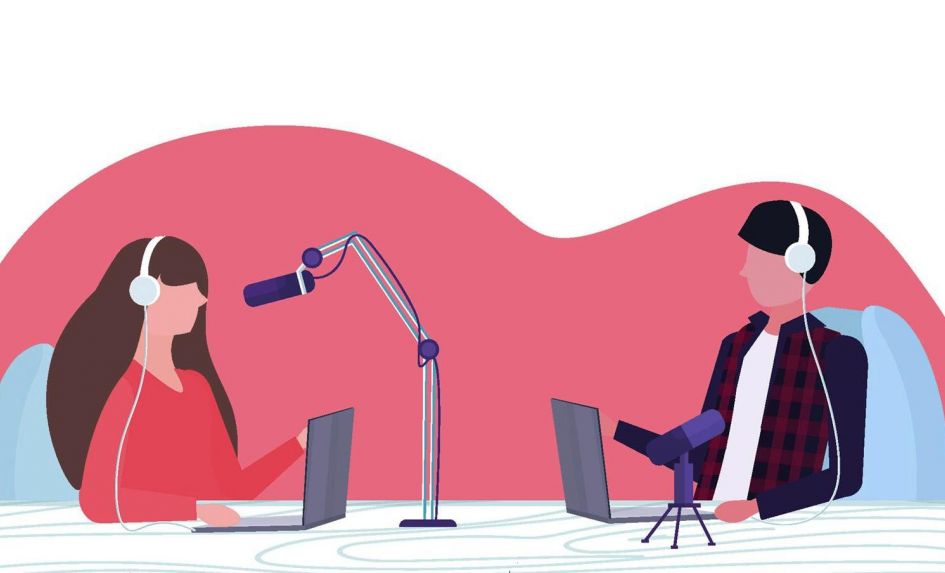For your students, writing and producing podcasts can be an extremely effective learning activity.
It allows them to develop skills in teamworking and collaboration, develop their ideas around enterprise, spark their imagination and improve their digital literacy skills. It can also simply be a chance to work in a medium that’s fun, stimulating and new.
Schools can also benefit as institutions by using podcasts both in and out of school. They can be shared via the school website as a tool for promoting the school and its activities in the local community, or even further afield, as part of efforts at forging international links with schools in other countries.
Producing a school podcast provides the perfect opportunity for involving members of your local community.
You could arrange interviews between local specialists and your pupils, for example, in which the former can share their local awareness and expertise, thus contributing to the latter’s overall levels of knowledge and experience.
Set the brief
When embarking on a podcast project, the first thing will be for the school to decide why they want to do it. It shouldn’t be done to simply tick a ‘digital learning’ box of some kind – it’s much better all round if the school is actively seeking to provide new learning opportunities.
More specifically, schools need to ask themselves whether there is indeed a need for them to provide more opportunities for creativity and collaboration and to develop their pupils’ communication and critical thinking skills.
If the answer is ‘yes’, then your school will be more than halfway down the path to getting a podcast project underway. Only once you’re clear as to the reasons for doing it can you then start to actually plan and deliver the project.
While there’s no single ‘right way’ of delivering a podcast project, for me, the first thing is to ensure that the teachers involved are familiar with the podcasting process and recording facilities that you’ll be using.
It will be helpful if you can provide pupils with general training in how to use the recording space before work on the project gets properly underway.
This can be done in a fun, relaxed and civil way, so that they’re given time and space to discover the possibilities of podcasting recording for themselves.
They’ll need to know the mechanics of how everything works ahead of time, but it should be imparted to them in an engaging way.
Be creative
Your learning intentions should then be shared with the students, alongside details of what the podcast brief is going to be. You might wish to specify a time limit on how long the podcast length should be – maybe try recording a trailer of 60 seconds or while you’re getting started.
As with all curricular and extra-curricular work involving young people, whatever you do will need to be carefully planned. Assess how much time investment will be required and formulate a clear outcome for the project so that it evolves into something of value.
Topics that work well will likely be ones that the pupils themselves will find engaging, but which may also find a wider audience, such as plastic pollution.
If you give your young people the freedom to be creative and feel their way through the early stages via trial and error, they’ll often surprise themselves – and you – with how capable and imaginative they can be. for staff.
Assign roles
Some general tips would include using good quality USB microphones and setting aside quiet space, if possible, that the kids can to go to when making their podcast.
As with any education project, producing a podcast will require a high level of classroom management by the teacher, who will need to be completely organised with respect to what each podcast production session will involve.
You’ll also need to decide on who’s doing what – be it voicing the intro, devising the running order, doing interviews and so on – and either allocate the various roles yourself or have the pupils self-assign.
It’s likely that the pupils will need training in how to capture a good quality recording (though it’s possible that they might end up helping the teacher).
General tips include talking close to microphones, making sure that the microphones are picking up a good signal before the recording starts and not talking over each other once recording has commenced.
Depending on the type of project you’re doing, it may be possible for pupils and teachers to record themselves in a quiet space at home. Tools like Soundtrap (see ‘Recording made easy’) make it easy to record podcast contributions separately and share them with the rest of the group.
Once the podcast has been recorded and edited, distributing it is a fairly straightforward process.
Soundtrap includes a one-click Spotify distribution function that teachers can use, if you’re interested in uploading your podcast there, and of course there are a number of major podcast hosting platforms where your project can go, notably Apple Podcasts.
That said, the easiest way of sharing a school podcast with interested parents will be to post links to the relevant MP3 files on your school’s website.
Get inspired
A couple of podcasts I’d recommend myself include Book Club for Kids, which is available via Google Podcasts and involves children from around the world talking about books they’ve recently read – young people can send in pitches.
There are also several podcasts on BBC Sounds, which are mainly aimed at 9 to 12-year-olds and serve as a good example of the podcasts’ storytelling potential. A particular highlight is a series called Once Upon a Time in Zombieville.
I myself am currently working on a project for Scotland’s National Centre for Children’s Literature and Storytelling (see peterpanmoatbrae.org), for which we’ll be recording podcasts at schools and putting together a showcase of their work.
Alan Cameron is a music teacher, former manager of music services in Glasgow and Dumfries and Galloway and presently an education adviser with Soundtrap; follow him at @alanhcameron1.
Recording made easy
Stefan Larsson, EDU business development and partnerships at Soundtrap, explains how schools can use the platform to simplify the process of producing a podcast
Soundtrap is an extremely easy to use online recording studio that can be used on virtually any device for recording music and producing podcasts. Recording with a couple of external microphones will improve your podcast’s sound quality and might make the experience more exciting for pupils, but it’s possible to get good results using built-in computer microphones and standard headsets.
Soundtrap is accessed via a web browser and entirely cloud-based, enabling pupils to work on podcast projects in a safe online environment. It’s effectively ‘walled garden’ closed to anyone outside the school; pupils at the school can use Soundtrap to contact and collaborate with each other, but only with each other.
Our Soundtrap for Education solution includes virtually all the features from our consumer packages, with support for remote collaboration and unlimited space for storing project files.
Podcasters can use its voice recognition technology to transcribe themselves while recording, and then edit the podcast audio by altering the text transcript.
Soundtrap for Education is available as a yearly subscription for education professionals, starting at £4 per student per year; for more details, visit soundtrap.com/edu.








